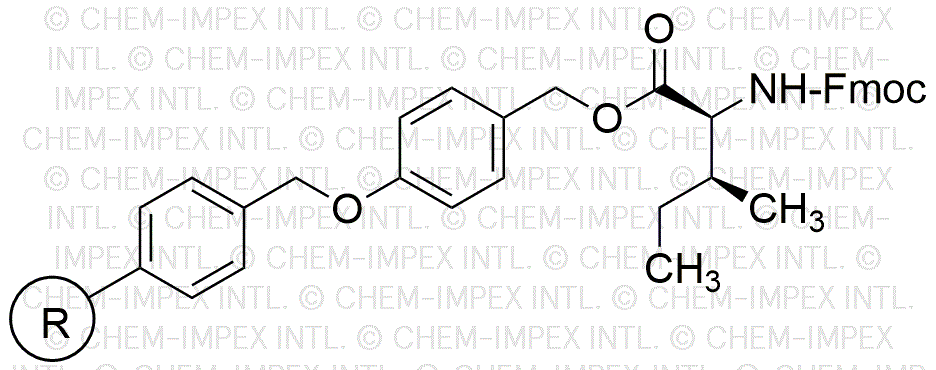Fmoc-L-isoleucine 4-alkoxybenzyl alcohol is widely utilized in research focused on:
- Peptide Synthesis: This compound serves as a protecting group in the synthesis of peptides, allowing for selective reactions and enhancing the yield of desired products.
- Drug Development: It plays a crucial role in the design of peptide-based drugs, particularly in optimizing their stability and bioactivity for therapeutic applications.
- Bioconjugation: The compound is used in bioconjugation processes, facilitating the attachment of biomolecules to surfaces or other molecules, which is essential in creating targeted drug delivery systems.
- Research in Cancer Therapy: It is explored in the development of novel anticancer agents, leveraging its ability to modify peptide structures for improved efficacy against cancer cells.
- Material Science: The compound is applied in creating functional materials, such as hydrogels, which can be utilized in drug delivery and tissue engineering applications.
Información general
Propiedades
Seguridad y normativas
Aplicaciones
Fmoc-L-isoleucine 4-alkoxybenzyl alcohol is widely utilized in research focused on:
- Peptide Synthesis: This compound serves as a protecting group in the synthesis of peptides, allowing for selective reactions and enhancing the yield of desired products.
- Drug Development: It plays a crucial role in the design of peptide-based drugs, particularly in optimizing their stability and bioactivity for therapeutic applications.
- Bioconjugation: The compound is used in bioconjugation processes, facilitating the attachment of biomolecules to surfaces or other molecules, which is essential in creating targeted drug delivery systems.
- Research in Cancer Therapy: It is explored in the development of novel anticancer agents, leveraging its ability to modify peptide structures for improved efficacy against cancer cells.
- Material Science: The compound is applied in creating functional materials, such as hydrogels, which can be utilized in drug delivery and tissue engineering applications.
Documentos
Hojas de datos de seguridad (HDS)
La SDS proporciona información de seguridad completa sobre la manipulación, el almacenamiento y la eliminación del producto.
Especificación del producto (PS)
La PS proporciona un desglose completo de las propiedades del producto, incluida la composición química, el estado físico, la pureza y los requisitos de almacenamiento. También detalla los rangos de calidad aceptables y las aplicaciones previstas del producto.
Certificados de análisis (COA)
Busque certificados de análisis (COA) ingresando el número de lote del producto. Los números de lote y de partida se pueden encontrar en la etiqueta de un producto después de las palabras "Lote" o "Lote".
Número de catálogo
Número de lote/lote
Certificados de origen (COO)
Este certificado de origen confirma el país en el que se fabricó el producto y también detalla los materiales y componentes utilizados en él y si se deriva de fuentes naturales, sintéticas u otras fuentes específicas. Este certificado puede ser necesario para cumplir con las normativas aduaneras, comerciales y regulatorias.
Número de catálogo
Número de lote/lote
Hojas de datos de seguridad (HDS)
La SDS proporciona información de seguridad completa sobre la manipulación, el almacenamiento y la eliminación del producto.
DownloadEspecificación del producto (PS)
La PS proporciona un desglose completo de las propiedades del producto, incluida la composición química, el estado físico, la pureza y los requisitos de almacenamiento. También detalla los rangos de calidad aceptables y las aplicaciones previstas del producto.
DownloadCertificados de análisis (COA)
Busque certificados de análisis (COA) ingresando el número de lote del producto. Los números de lote y de partida se pueden encontrar en la etiqueta de un producto después de las palabras "Lote" o "Lote".
Número de catálogo
Número de lote/lote
Certificados de origen (COO)
Este certificado de origen confirma el país en el que se fabricó el producto y también detalla los materiales y componentes utilizados en él y si se deriva de fuentes naturales, sintéticas u otras fuentes específicas. Este certificado puede ser necesario para cumplir con las normativas aduaneras, comerciales y regulatorias.

